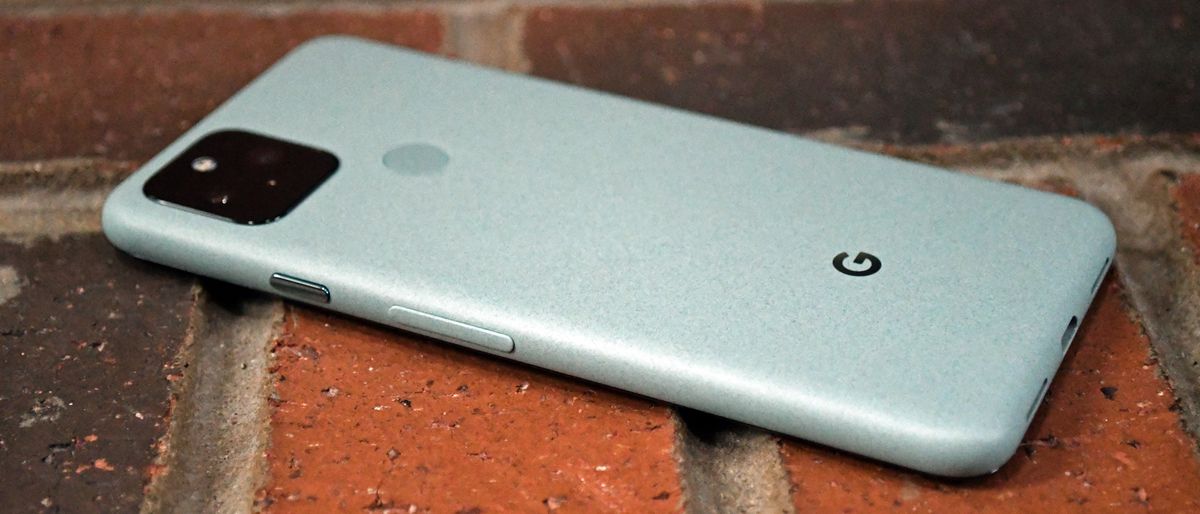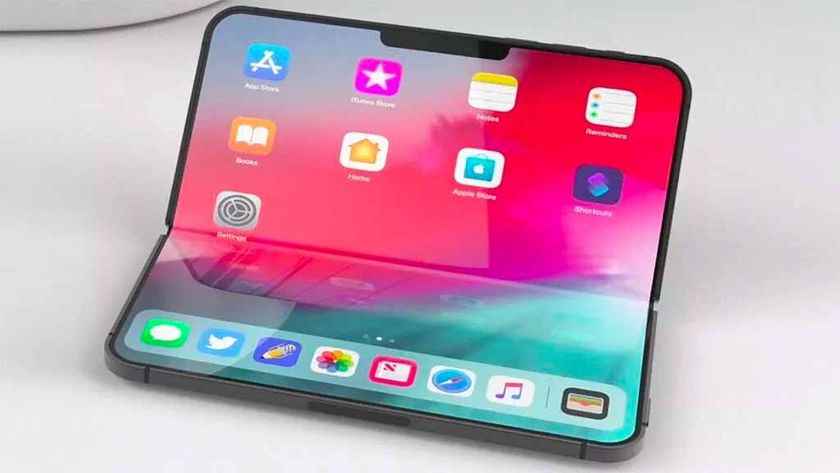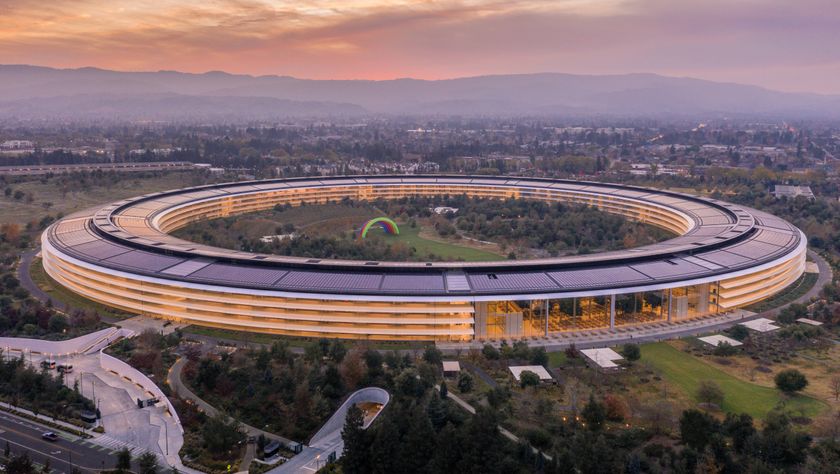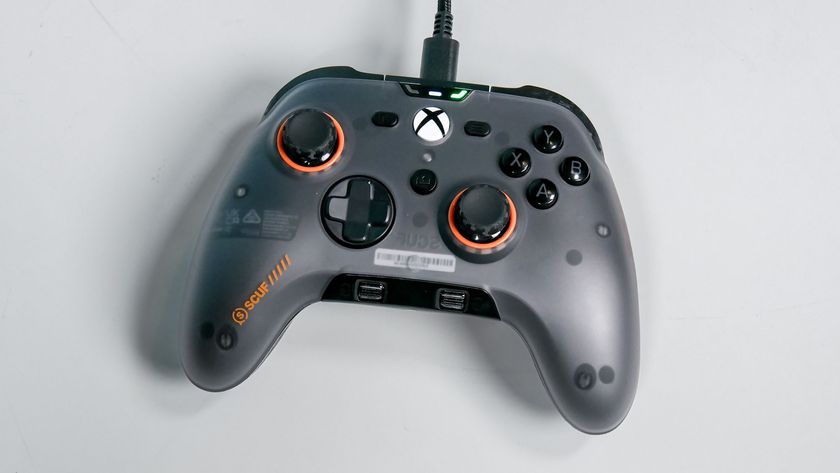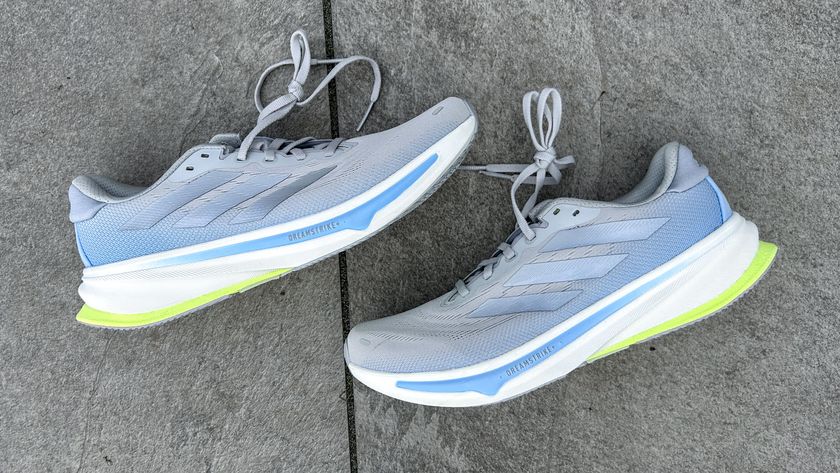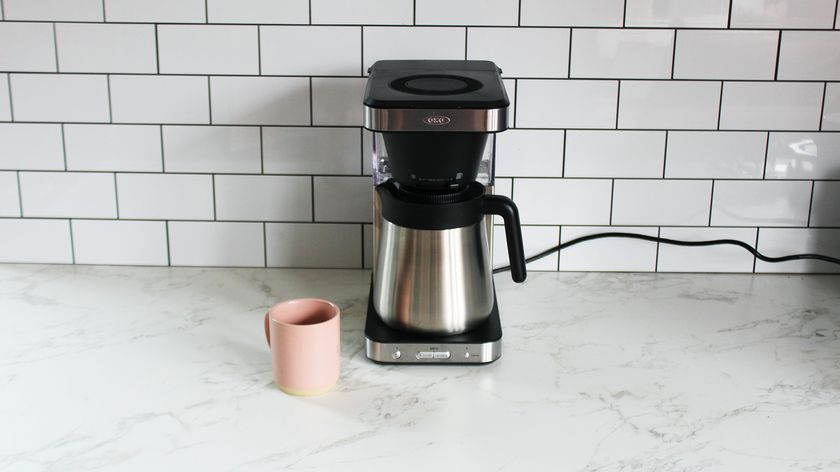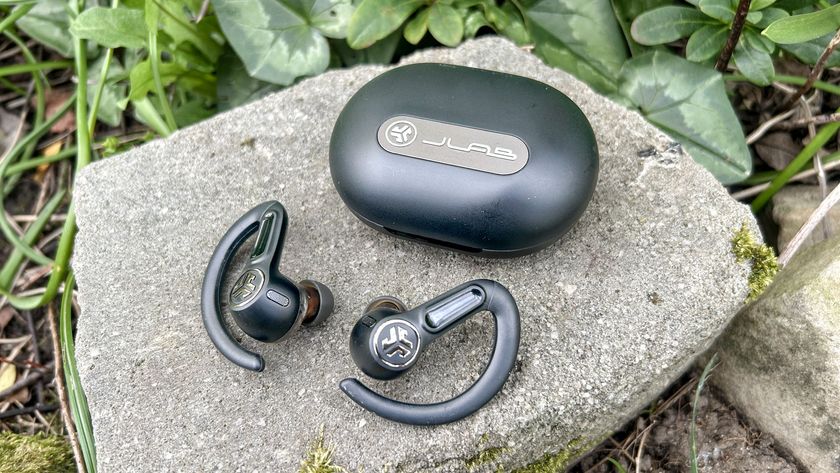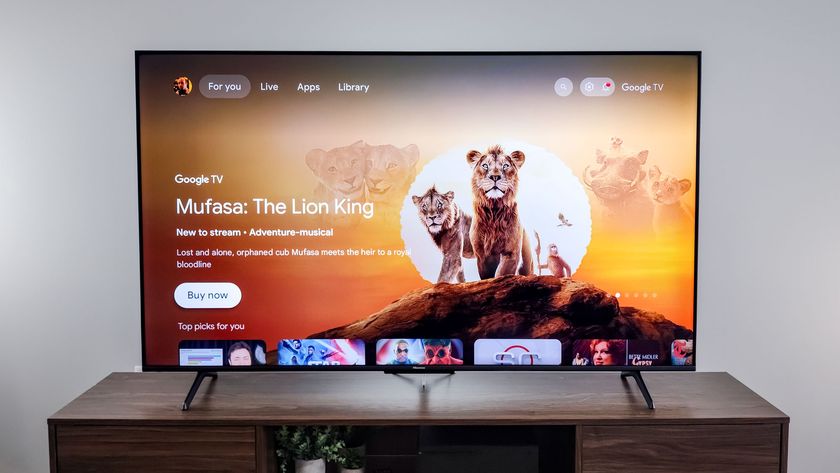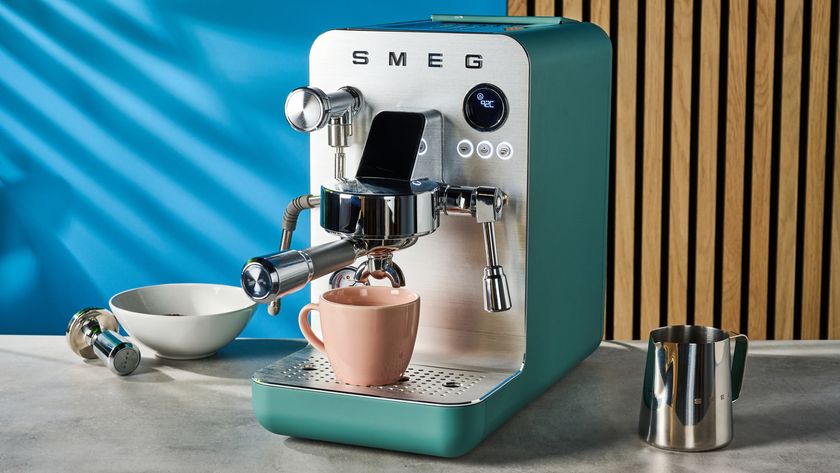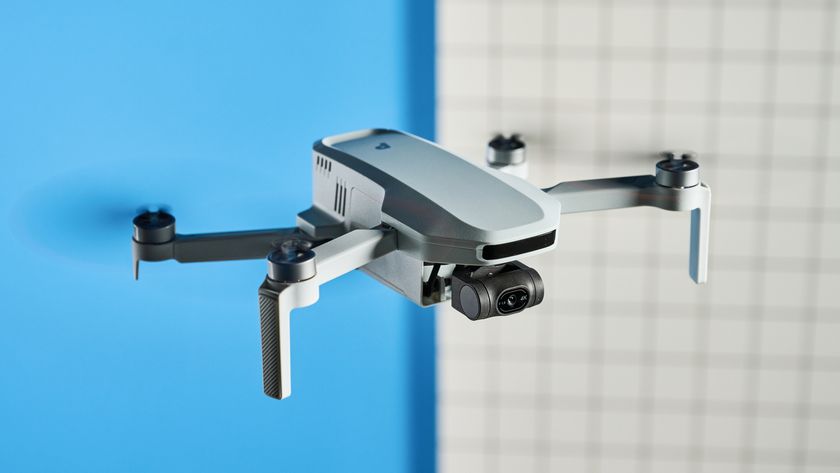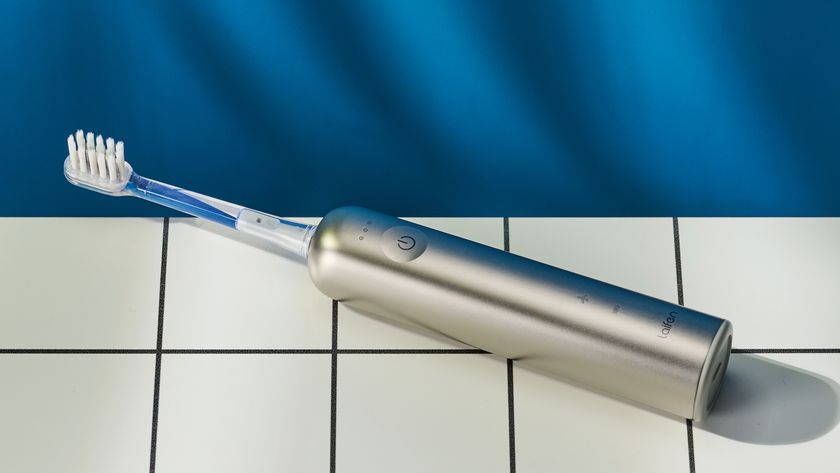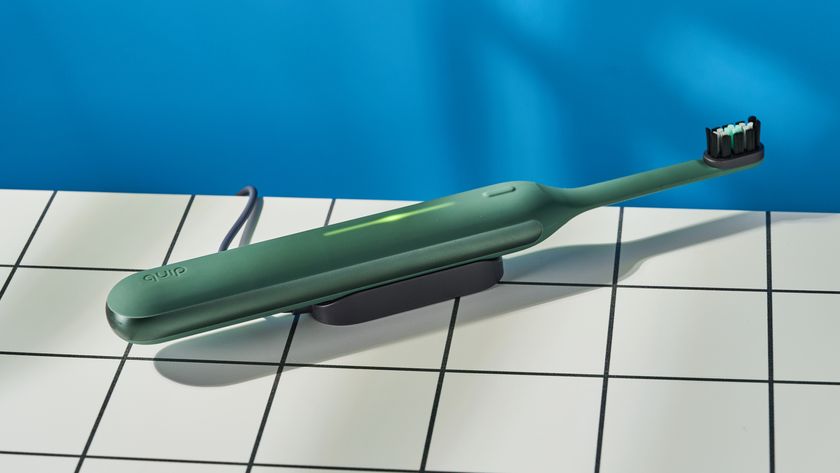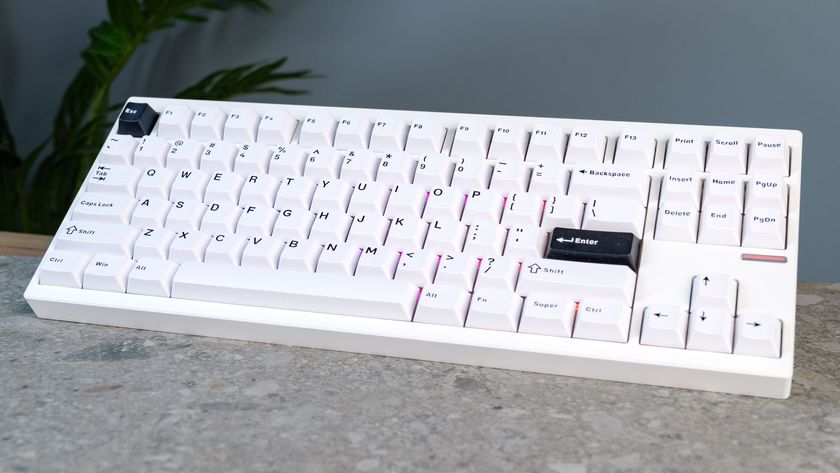Tom's Guide Verdict
The Google Pixel 5 is a charming and reasonably-priced premium phone with an amazing camera and good battery life. But it's far less powerful than other options in its price range, and completely outmatched in value by Google’s cheaper Pixel 4a 5G and Pixel 4a.
Pros
- +
Gorgeous compact design
- +
Excellent camera, now with ultrawide lens
- +
Solid battery life
- +
Useful software features
Cons
- -
Underwhelming performance
- -
Expensive for what it is
- -
No higher storage option
Why you can trust Tom's Guide
Price: $699
OS: Android 11
Display: 6-inch OLED (2340x1080; 90Hz)
CPU: Snapdragon 765G
RAM: 8GB
Storage: 128GB
Rear camera: 12.2MP wide (ƒ/1.7), 16MP ultrawide
Front camera: 8MP (ƒ/2.0)
Battery: 4,000 mAh
Size: 5.7 x 2.8 x 0.3 in
Weight: 5.3 oz
The Google Pixel 5 confuses me because it's both a wonderful phone and a strange one because, as consumers, we’re conditioned to expect that a new version of something is better than whatever it’s replacing. That's usually the case.
In some ways, the Pixel 5 is better — at $699, it costs $100 less than the Pixel 4 did. The new Pixel has a much larger battery with wireless reverse charging, 128GB of base storage, and a new ultrawide lens; and, of course, it sports 5G connectivity.
However, the Pixel 5 certainly isn’t better in every way. Critically, Google has chosen a lower-tier chipset to keep costs down and ditched some of the Pixel 4’s more advanced and unique features, like its 3D Face Unlock system. It’s also hard to discuss Google’s newest range-topping phone without mentioning its $200-cheaper sibling, the Pixel 4a 5G. That phone shares the Pixel 5’s processor and camera, among other things, allowing it to match the flagship in most key areas.
- Best unlocked Android phones: Where the Pixel 5 ranks
- Pixel 5a vs. Pixel 5: Biggest differences to expect
- iPhone 12 vs. Pixel 5
Thus, our Google Pixel 5 review finds a device that is very pleasant to use, but also very confused. Google clearly had to make some tough compromises here, and while there’s no doubt that the company’s once again delivered one of the best Android phones you’ll find, the Pixel 5 doesn’t even qualify as the best value in Google’s own lineup.
Editor's note: We crowned our picks in the Tom's Guide Awards 2021 for phones. The Pixel 5 won a highly recommended award.
Google Pixel 5 review: Price and availability
The Pixel 5 costs $699 and packs 128GB of storage. Interestingly, Google isn’t offering a higher storage capacity version, and the Pixel 5 doesn't support microSD cards to give you more space to work with. There are two colors — Just Black and Sorta Sage.
The Pixel 5 is sold unlocked, where you can take it to any carrier of your choosing, or through AT&T, Verizon, US Cellular and Google Fi.
Google has designed the Pixel 5 to connect to both sub-6GHz low- and mid-band 5G networks, as well as millimeter-wave ones, meaning that it supports the full gamut of 5G service no matter which carrier you take it to. That said, I never experienced impressive speeds during my time with the phone, even when I happened to be in range of AT&T’s nationwide 5G network. In fact, the speeds I saw were consistently in the single digits in terms of megabits per second — of course, your mileage may vary.
Google Pixel 5 review: Design
If you've seen a Google-branded phone in the last year or two, you've virtually seen the Pixel 5. All of Mountain View's modern handsets are remarkably simple and minimalist in terms of design, with small hole-punch front-facing cameras and tiny bezels encircling the display. On the back, there's a fingerprint sensor and a square camera module packing dual optics — and that's pretty much it.
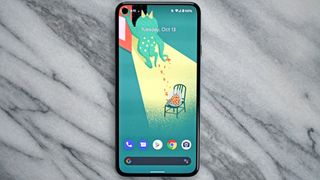
There are, however, a couple minute details to point out related to the Pixel 5's design. Whereas the company's cheaper devices employ matte polycarbonate, the Pixel 5's unibody housing is crafted from recycled aluminum (save for a small, invisible hole on the back underneath the paint that permits wireless charging — more on that later.) The Pixel 5 is also IP68 water resistant, while the Pixel 4a series isn't.
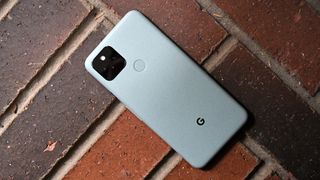
The finish on the Pixel 5 appears to have drawn conflicting opinions from various reviewers. Some dismiss the matte, almost candied sort of coating Google has employed on this phone as cheap-feeling. Personally, though, I’m a sucker for unique materials — especially slightly-gritty or soft-touch textures — and I love the finish of the Pixel 5. I don’t know if it’s the most “premium” feeling smartphone I’ve ever held, but such questions are highly subjective. Whatever Google’s done to achieve the Pixel 5’s earthy sort of finish, I dig it.
I especially dig the Sage Green version Google sent us. This is a lovely shade of green with some faint speckles in it, giving it sort of an eggshell-like luster. It also plays off brilliantly against the chromed green power button and Google logo on the back. I am slightly concerned about this coating chipping off in high-contact areas, like around the USB-C port (my Pixel 4 unfortunately fell victim to this phenomenon), but only time and ongoing use will reveal how durable the Pixel 5’s exterior really is.
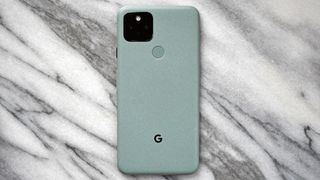
Something else I adore about the Pixel 5’s design is just how damn pocketable it is. Anyone who knows me knows I love a good premium small phone, and the Pixel 5 certainly is tiny. Google has trimmed the border around this device’s 6-inch display to maximize screen real estate. It’s perhaps the closest any company has gotten to a truly all-screen phone, though it’s come at a cost — namely the Pixel 4’s Soli radar chip and 3D Face Unlock stack that were formerly stashed in the top bezel.
The Pixel 5 lacks those components, which is disappointing given that the Pixel 4's authentication system was pretty phenomenal, and noticeably snappier in our testing than Apple's Face ID in the iPhone 11 and 12 series. But with most everyone still using face masks, perhaps it's not all bad.
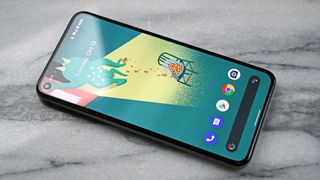
As such, you’ll have to live with an effective-yet-dated rear-mounted fingerprint sensor in the Pixel 5. This probably isn’t a deal breaking proposition for an old-school Android user, though I can certainly imagine some folks recoiling in fear at the thought of inputting a PIN code when their device is lying flat on a table. You can also swipe on that fingerprint sensor to pull down or withdraw the notification shade.
Thus, there is a sense of form triumphing over function with the Pixel 5’s design, though I’m personally not very bothered by that because the result is so eye-catching and compact. It’s feather-light, too — at just 5.33 ounces, the Pixel 5 is more than an ounce lighter than the iPhone 11 Pro and Galaxy S20 Plus, which you certainly feel the moment you hold and compare.
Google Pixel 5 review: Display
The Pixel 5’s 6-inch OLED display touts a full-HD resolution and 90Hz peak refresh rate, which you can drop down to 60Hz in the device’s settings if you so choose. The refresh rate isn’t variable per se — unlike the Galaxy Note 20 Ultra’s screen, it can’t speed up or down dynamically to any pace at will — though Google says the Pixel 5 switches between 60Hz and 90Hz depending on the type of content presented.
It's worth noting that the Pixel 4a 5G also features an OLED panel with the same resolution as the Pixel 5's screen. But the refresh rate on the 4a 5G is capped at 60Hz, so that's one area where Google's flagship outdoes the cheaper 5G option.
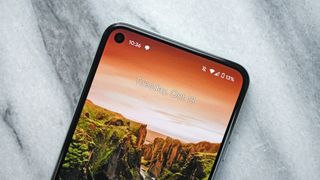
Pretty much all of those characteristics were true of the Pixel 4’s panel, though, meaning that not much has changed on the display front this go-around. Mind you, that’s not a criticism, considering the Pixel 4’s screen was pretty stellar all around. For what it’s worth, the Pixel 5 is at least better at maintaining 90Hz at low brightness levels — one particular area where the old device struggled.
Colors on the Pixel 5 strike an excellent balance between muted realism and cartoonish oversaturation. Watching the trailer for the wonderfully surreal Iron Mask, I was so impressed by the fidelity with which the Pixel 5’s panel rendered Arnold Schwarzenegger’s magnificent sideburns that I momentarily forgot to laugh at the prospect of Arnold Schwarzenegger with sideburns.

The Pixel 5’s display gets decently bright, though not as bright as its competition, topping out at 610 nits when adaptive brightness is enabled. For comparison’s sake, the $599 iPhone 11 managed 652 nits, while the Galaxy S20 FE managed 679 nits. Meanwhile, Google’s phone covered 128.8% of the sRGB color space, which happened to be slightly punchier than the 122.8% of the more expensive Galaxy Note 20.
Google Pixel 5 review: Camera
The Pixel 5 features a dual-lens camera system that's equal parts familiar and new for Google's handsets. The primary 12.2-megapixel lens is a mainstay of the Pixel brand; it's been around since the Pixel 2 days, and Google mostly relies on software enhancements to continually improve its output.

The secondary shooter, however, is a new 16MP ultrawide camera, which replaces the telephoto lens employed in last year's version. Google drew criticism for offering a telephoto lens with a very slight optical zoom advantage in the Pixel 4, rather than an ultrawide optic. I believe this was the right call, as I suspect most Pixel 5 buyers will find the addition of an ultrawide camera more useful than a telephoto — especially considering Google’s Super Res Zoom technology is so effective at achieving lossless digital zoom.
Here, we see a comparison between the ultrawide shooters on the Pixel 5 and also brand-new OnePlus 8T, and it’s honestly hard to choose between the two. While OnePlus’ camera demonstrates a wider field-of-view, the tradeoff is more distortion at the fringes than you’ll notice in the Pixel 5’s rendition. On the other hand, Google’s superior processing deftly colors in those darker, shadowy regions about halfway down the alley, with more nuanced blacks, grays and dark greens than OnePlus’ more contrast-heavy tuning can provide.
Heading inside, we have a pair of portraits of yours truly that highlight how the Pixel 5 keeps Google firmly in the best camera phone conversation. Everything about the Pixel 5’s take is sharper, from my beard, hair and skin to the fibers in my sweater. I’m also impressed with the superior gradation in color within low-light areas (like my left shoulder), and simply pleased with how much more lifelike the colors are all around. There’s just no contest here.
The bar above offers a good opportunity to demonstrate the Pixel 5’s excellence in handling medium-lighting scenarios that present a general lack of natural light with intense artificial sources, like neon signs. This is typically a challenging scenario for phones, and while I feel as though both these devices navigate it well, the Pixel 5 edges OnePlus’ best efforts thanks to its ability to isolate the brightest lights and hone in on textures, like the specular highlights glinting off the concrete countertop and the rustic wooden floor below.
Here, 2x digital zoom was used on both the Pixel 5 and OnePlus 8T, and once again it’s Google’s device that stands out with better definition, bolder colors and pleasing contrast. The tree near the center of the frame denotes a clear point of distinction between these two photos; on the Pixel 5, you can discern between the individual leaves, whereas the OnePlus 8T melds them all into one amorphous, verdant blob.
However, it wasn’t all smooth sailing for the Pixel 5. In this example we see it struggle at dusk, bathing the entire alley before you in a deep and desolate blue. The OnePlus 8T balanced all the colors in the frame better, though it fell down once again in the sharpness department.
But when things get really dark and it’s time to call upon Night Sight, the Pixel 5 really shines. The iPhone 11 Pro costs $300 more than the Pixel 5, and I’d say its performance here isn’t anywhere near the level of Google’s device. Everything is much too warm, and fidelity is clearly lacking in the big tree at the center and the lawn nearest to the camera. The Pixel is also far more successful at accurately representing the colors of various objects in the scene, like the tree’s greenish-yellow leaves and the maroon sedan parked on an adjacent street.
Apple’s flagship phone is more susceptible to noise judging by this image, though it has to be said that the iPhone did process this photo in almost half the time it took the Pixel 5 to do the same — 3 seconds, versus 5. That’s clearly a case of Apple’s hardware flexing its muscle relative to the far less powerful Pixel, which we’ll explore a little later in this review.
Finally, we end on another pair of pictures of your humble reviewer — though, this time, I spurned the assistance of a willing party and employed the Pixel 5’s front-facing 8MP camera to capture it.
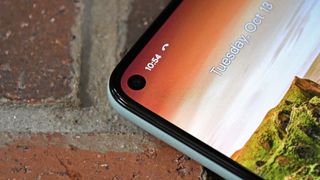
Again, this is another case where Google’s imaging outperforms rivals with far more impressive specs on paper, using a combination of ordinary hardware and extraordinary software. The OnePlus 8T might have a 32MP selfie shooter, but it obviously hasn’t helped much, based on the unflattering reddish tone that device’s camera lent to shadows in my face. Of course the Pixel’s result could stand to be a hair sharper, but overall, at least it left me looking like there was life left in my eyes.
Before we move on from the camera section entirely, we should note that Google has punched up its video recording arsenal with the Pixel 5’s release by offering a range of electronic stabilization modes. There’s standard stabilization, which seeks to dull tremors caused by shaky hands, as well as modes targeted for shooting subjects at far distances, another for active or fast-moving subjects, and yet another for slow-motion, panning shots.
The new stabilization options work well, though they’re certainly not immune to judder. You will notice moments where the camera interpolates frames in a blurry fashion to diminish the sensation of unexpected movement, so it’s still important to take care to maintain composure when shooting.
Google Pixel 5 review: Performance
Google’s decision to equip the Pixel 5 with Qualcomm’s Snapdragon 765G processor, rather than the Snapdragon 865 employed by the fastest Android flagships, has certainly left critics and enthusiasts alike scratching their heads.
It’s not that the 765G is poor silicon — far from it. The 765 series certainly delivers good enough performance in the likes of the OnePlus Nord and LG Velvet. Rather, the skepticism stems from where the Pixel 5 sits within Google’s roster of phones.
As it happens, the 765G is also employed in the Pixel 4a 5G, which costs $200 less than the Pixel 5. And to make matters even more confusing, Google’s insistence on going with a more modest CPU means the new Pixel 5 isn’t even as fast as last year’s Pixel 4 and Pixel 4 XL.
Google’s strategy here befuddles me to no end, though that’s a discussion for another day. The more pressing concern is what all that means for the Pixel 5’s performance, and I’m happy to report that at least this phone doesn’t feel as slow as some will worry it is.
To Google’s credit, the company has bumped up the RAM in this device to 8GB, which is more than the Pixel 4 had at its disposal. (It's also more than the 6GB of memory inside the Pixel 4a 5G.) And the 90Hz display certainly promotes the illusion of speed with every tap and scroll, even if the hardware under the surface is decidedly more pedestrian.
But of course, the numbers aren’t encouraging. In the system-wide Geekbench 5 test, the Pixel 5 delivered a multicore score of 1,617 points. That’s certainly a far cry from the Galaxy S20 FE’s 2,928 points, making this a good time to reiterate that the Galaxy S20 FE costs exactly the same as the Pixel 5. To add insult to injury, the now-defunct Pixel 4 scored 2,329 points.
In spite of that gulf in general performance, it’s not everyday tasks where you’re likely to test the limits of that 765G chip. Rather, that’s best reserved for more strenuous pursuits, like gaming. In GFXBench’s Vulkan Aztec Ruins graphics test for high-tier devices, the Pixel 5 totaled 438 frames, averaging 7 frames per second. The Galaxy S20 FE, on the other hand? 1,325 frames at 21 frames per second. That’s exactly three times better.
A better judge of real-world performance is our video encoding test, where we task devices with transcoding a short 4K video clip to 1080p in Adobe’s Premiere Rush app. The iPhone 11 was able to do this in 46 seconds. The Pixel 5 needed 2 minutes and 25 seconds.
Indeed, you can play games on the Pixel 5; they just won’t look all that good, or run as smoothly as they would on beefier hardware. I can attest to the fact that Asphalt 9 Legends is indeed playable on this device, though I’d much rather experience that arcade racer on a phone like the OnePlus 8T, which actually has the power to max out its 120Hz display while running that demanding title.
The Pixel 5 isn’t slow, and I honestly doubt the majority of users are likely to notice what power it lacks. But I also believe that at $700, you should get the most for your money — and after two or three years of ownership, when things begin to bog down, I’d rather have something that was more powerful at the start.
Google Pixel 5 review: Battery life and charging
Previous Pixel phones have certainly struggled in the battery department, so the Pixel 5's 4,080-mAh power pack will hopefully go a long way to quelling those concerns. That's an increase of nearly 1,300 mAh compared to the Pixel 4, and I imagine it must have been a massive engineering feat to shoehorn such a gigantic battery into such a small footprint and thin frame.
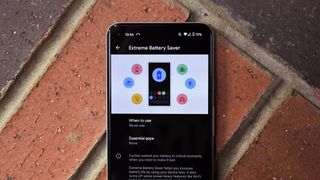
In Tom’s Guide’s custom battery test, where devices endlessly load web pages over a data connection until they run out of juice, the Pixel 5 lasted for 9 hours and 29 minutes at its default 90Hz mode. That’s an improvement of one hour and 26 minutes over the Pixel 4, also when running at 90Hz. Some may argue that’s a rather underwhelming showing given the big increase in battery capacity, though it’s important to point out that the Pixel 5 has power-guzzling 5G modems and radios the Pixel 4 never had to deal with.
It’s also right in line, if not a little better than the Pixel 5’s current Android rivals. The Galaxy S20 FE also managed 9 hours, but that was at 60 Hz; attempt that same test at the phone’s optimal 120Hz setting, and it would assuredly underperform that result by at least another hour.
Likewise, if you want to maximize battery life as much as possible with the Pixel 5, you can opt for 60Hz instead of 90Hz. Running the test this way, we saw an improvement of about 30 minutes.
But battery tests only tell part of the story in the Pixel 5’s case. Google’s lavished a wealth of battery-extending software on the Pixel 5, including its Adaptive Battery system that intelligently regulates power draw so that only the apps you use the most consume the bulk of it. Additionally, a new Extreme Battery Saver mode goes even further, pausing activity for all apps except for the ones you deem essential.
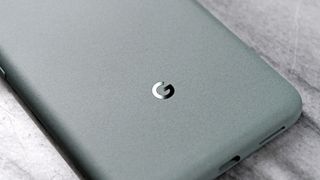
Like the Pixel 4 before it, the Pixel 5 can charge wirelessly. The difference this time is that the phone can also wirelessly charge other devices, using Google’s new Battery Share feature. If you happen to have a pair of Bluetooth earbuds, for example, with a wireless charging case, you can rest them on the back of the Pixel 5 for a little boost.
Google Pixel 5 review: Software and special features
As you’d expect with any Google phone, the Pixel 5 launches with Android 11 and is guaranteed three years of major updates. Android 11 adds some beneficial features, like screen recording, bubbles for messaging apps and the ability to grant temporary permissions to apps; you can read our full Android 11 review for a deeper dive into what’s new.
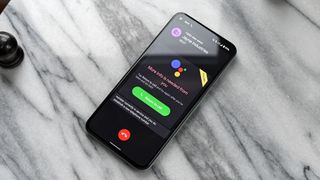
But this being a Google phone, the Pixel 5’s software story is about more than simply having the latest version of Android. Google has once again gifted its own phones with some really clever features that make the most out of its expertise in artificial intelligence, like Hold For Me.
Hold For Me quite literally does what it says on the tin. If you’re placed on hold, you can call upon your Google Assistant to stay on the line for you and listen for an operator when they arrive. When that happens, you’re notified and invited to return to the call.
Hold For Me only works for 1-800 numbers. Given that many companies these days (the more humane ones, anyway) have a system where they’ll call you back when it’s your turn, I don’t quite think Hold For Me is as useful as, say, Call Screen, which can literally fend off robocalls on your behalf, or the Google Recorder with built-in transcription. But it is nice to have.
While I wasn’t able to use Hold For Me in a realistic scenario during my review, my Pixel 5 did offer me assistance when I dialed a 1-800 test number. I initiated Hold For Me, and when the Google Assistant detected that the automated system on the other end needed my input, it vibrated to signal me to return to the call. Pretty neat.
Google Pixel 5 review: What about the Pixel 6?
The Pixel 6 and Pixel 6 Pro are finally here. Both phones are massive improvements over the Pixel 5 in terms of power, design, and displays. While the Pixel 5 isn't bad at any of those, it has room for improvement. That's where the Pixel 6 series comes in.
Of course, the highlight of the next Pixel phones is the Tensor system-on-chip, designed by Google. It's the first time that Google has gone with its own silicon for a Pixel and could be the start of something wonderful.
The cameras certainly performed beyond our expectations, especially the Pixel 6 Pro. But for more budget-conscious customers, the $599 Pixel 6 is a steal and has the same Tensor chip as the Pro. It also has a 90Hz display and the same 50MP main and 12MP ultrawide cameras.
Battery life remains a problem for the Pixel 6 and Pixel 6 Pro, but that could be down to the older Samsung 5G modem that both phones use. Still, the Pixel 6 and Pixel 6 Pro are significant upgrades over the Pixel 5 and well worth considering.
Google Pixel 5 review: Verdict
As much as I like the Pixel 5, it’s hard to make a case for buying one — at least at full price.
The $700 mark has become the new battleground for phone makers looking to woo buyers with top-tier specs, without forcing them to spend upward of a grand. This competition is producing really compelling phones, from Samsung’s Galaxy S20 FE to the OnePlus 8T and likely Apple’s just-announced iPhone 12 mini. The Pixel 5 is a poor value in light of those alternatives.
Mind you, there’s plenty to like here. It’s heartening to see Google finally take battery life seriously after years of dismissing that concern. And once again, I’m smitten with the refreshingly cute, trendy and compact aesthetic Google’s settled on for the Pixel, amongst a sea of bulky, garish slabs.
However a phone isn’t merely a fashion piece or a camera. And speaking of the Pixel 5’s wonderful camera, you can get it in the $499 Pixel 4a 5G — hell, you can get it in the $349 Pixel 4a. Since the Pixel 4a 5G offers the same dual camera array as the Pixel 5, the same processor and the same 5G connectivity but for $200 less, it's hard to recommend the Pixel 5 over Google's less expensive phone if you're looking for a 5G device.
Those who love Pixel phones do so because of the software, and Google has done well to make that software accessible in much cheaper phones. Unfortunately for Google, that very ambition has almost neutralized any reason one might want to purchase a Pixel 5.
- Google Pixel 5 vs. Samsung Galaxy S20: Which Android phone is better?
Adam Ismail is a staff writer at Jalopnik and previously worked on Tom's Guide covering smartphones, car tech and gaming. His love for all things mobile began with the original Motorola Droid; since then he’s owned a variety of Android and iOS-powered handsets, refusing to stay loyal to one platform. His work has also appeared on Digital Trends and GTPlanet. When he’s not fiddling with the latest devices, he’s at an indie pop show, recording a podcast or playing Sega Dreamcast.
-
the gamper This pixel 5 isn't a flagship phone. Even the good reviews have to sugar coat it, and $700 ain't cheap. Please charge me $200 more for top tier specs...please! I am likely a good indicator of a lot of pixel phone users to date. I have 5 lines in my household and have purchased at least one of every generation of Google phone since Nexus 6p, most recently being orange 4xl. I have had good luck and always been very happy with them. Google may bring in some budget minded converts, but die hard fans like me are probably looking at a Oneplus 8T, or even considering Samsung again now that they upped their game with regular OS updates. Very disappointed that Google has given up on this space. If mediocrity with a high price is all I have to look forward to when the 6 rolls around, I think Google and I will go our separate ways.Reply -
Agate52 I would love to know what the reception is like with this phone (assuming the best carrier coverage is in operation for the area). I get poor reception in my concrete slab metal-trimmed double-paned windows home and fish in the hilly Driftless area known for poor reception. Should I break an ankle in the boonies, I'd like a phone with the chance to make a text. I was considering the Pixel and iPhone and learned androids possibly have better reception, in general than iPhones. I've read some poor reception complaints on earlier Pixels. I didn't want a Samsung but have just read that Samsungs, in general, seem to have better antennas/reception.... Maybe, by this time, all of these phones will have better reception than my Motorola Droid Mini, but I can't really say. There is a little information out there on reception, but not much -- at least to my novice eye.Reply -
john.reilly66 Reply
For me, the reception is AMAZING. I upgraded a Samsung Galaxy S8 in Oct. We could barely use data or MMS sitting in the living room. When the P5 came online, we suddenly had great LTE in the same spot. Blazing fast Internet and MMS text. "SpeedTest.net" went from 1 MBps to a rock solid 2-4 times that in the same spots in the house. It was so good that I upgraded all my phones: S8, Pixel 2, Pixel 3XL.Agate52 said:I would love to know what the reception is like with this phone (assuming the
I used the P2 hotspot exclusively because we have no high-speed where I live. I used to put it on the porch in a certain spot to make it adequate for streaming. With the P5, I can put it anywhere and get HD streaming nearly all the time (not during the peak 4-7pm). We even discovered that we have 2 bars of 5G. Game changing. 5MBps. I can now sit in the recliner and browse and text.
For me, the P5 reception is worth every penny. Worlds better than the S8 and P2, even without the 5G. I use my phone for voice, text, and hotspot. I never use it for applications or video, so I don't care about those things. The camera is better than I can use.
The only weird part is that everyone I talk to sounds like they have a bucket on their head. The audio is crystal clear, but with a little reverb. -
Dkavadikian Im not here to argue or compare the Pixel 5 and it's array of technical successes to any other phone. I just have a simple yet long-winded comment regarding this review and the industries general need to change something just for the sake of changing it. We try new things, like when Apple went to the "smart" full screen design we use now. Of course we wouldn't move back to the old flip phone 2 inch screen. The current version is superior in every way.Reply
Regarding this review I would like to point to the finger print/unlock button on the back of the p5. The finger print pad is the MOST convenient function to be added to ANY phone in a long time. The idea that it is outdated, or that the user would have to "live with it" is ridiculous. The reason I write this is my fear that Google may read or hear this opinion and other reviewers perception that it is outdated and unnecessarily and they would take it away forever.
Unlocking your phone is your first interaction with your phone when you pick it up, EVERYTIME you pick it up. If I have my phone in my pocket or wherever/whenever I pick it up, my index finger naturally falls right in that spot of the reader. Most recognition software, facial or whatever, although they work, is an additional step, something that has to be "done..." The finger print reader on the back makes unlocking the phone part of picking it up. It's so seamless I've had people accuse me of not locking my phone and they are surprised when I show them my setup. And, it never fails, unless you're wearing gloves. At which point it automatically defaults to whatever type of unlock interface you choose as your second choice.
Sometimes the simplest things have the greatest impact on your overall experience. Whether your phone or the use of NFC when you unlock your car door. When google moved away from the rear finger print reader with the 4 I surprisingly found it effected my whole experience.
Everytime my phone dings I look at it. Period! It's what I do. The p5 setup allows me to keep full security on at all times so nothing shows and the act of lifting and looking at the screen unlocks my phone at the same time. When I used the 4 (or any phone without the rear finger print pad) I found myself allowing some info to be viewable because I didn't want to have to "unlock" it each time I wanted to see the home screen.
I do realize it's just personal preference, and that some things are inherent to Android or to Apple, I'm not sure if this can be duplicated by any other phone manufacture or if this is an Android only thing. Again I'm not here to talk about apple vs google I'm just commenting on how useful this function is. Once I got used to having it on my phone everything else has become second place, some are neat like facial recognition, but from a functionality standpoint everything else is clearly second place.
As a matter of fact in order of "functionality importance" (if that's a category) on my Pixel 5 I think the location of the finger print reader ranks up there with battery life, which happens to be above average with my Pixel 5. It turns in a pleasing user experience for me.
Good day! -
SpecialSauce13 I wholeheartedly agree. When I read that the Soli tech was out, I thought "Great!" It's an expensive feature I couldn't be happier to be without.Reply
My concern is that the price point is ridiculous. My Pixel 2 works great, if not for the problems below 54% where trying to use that great camera means instant shut down. Or how even playing Spotify or Stitcher below 30% does the same.
I've consider trying a battery replacement, but at that point I'm a third of the way to this expensive phone (and I know just how incredibly inexpensive a battery pack is).
For devices with incredibly short lifespans, my expectation would be some respect from manufacturers in pricing at disposable costs. This is sort of the case for the 4a, but I want the water resistant, all metal case and wireless charging even at that price.
One other factor to price is the 5g. Frankly, if you're not in the downtown core of a very large metropolis, you don't have it and would never notice if you do. Modern speeds are fantastic for everything you might do on a phone except for online gaming. Who the hell is gaming with their phone though?
I'll likely upgrade to the Pixel 5, but that's really only because of the durability factor. My latest check has the 5 at $800 CDN with the 4a5G $680. It bites paying $120 more for six cents of formed aluminum.
Dkavadikian said:Im not here to argue or compare the Pixel 5 and it's array of technical successes to any other phone. I just have a simple yet long-winded comment regarding this review and the industries general need to change something just for the sake of changing it. We try new things, like when Apple went to the "smart" full screen design we use now. Of course we wouldn't move back to the old flip phone 2 inch screen. The current version is superior in every way.
Regarding this review I would like to point to the finger print/unlock button on the back of the p5. The finger print pad is the MOST convenient function to be added to ANY phone in a long time. The idea that it is outdated, or that the user would have to "live with it" is ridiculous. The reason I write this is my fear that Google may read or hear this opinion and other reviewers perception that it is outdated and unnecessarily and they would take it away forever.
Unlocking your phone is your first interaction with your phone when you pick it up, EVERYTIME you pick it up. If I have my phone in my pocket or wherever/whenever I pick it up, my index finger naturally falls right in that spot of the reader. Most recognition software, facial or whatever, although they work, is an additional step, something that has to be "done..." The finger print reader on the back makes unlocking the phone part of picking it up. It's so seamless I've had people accuse me of not locking my phone and they are surprised when I show them my setup. And, it never fails, unless you're wearing gloves. At which point it automatically defaults to whatever type of unlock interface you choose as your second choice.
Sometimes the simplest things have the greatest impact on your overall experience. Whether your phone or the use of NFC when you unlock your car door. When google moved away from the rear finger print reader with the 4 I surprisingly found it effected my whole experience.
Everytime my phone dings I look at it. Period! It's what I do. The p5 setup allows me to keep full security on at all times so nothing shows and the act of lifting and looking at the screen unlocks my phone at the same time. When I used the 4 (or any phone without the rear finger print pad) I found myself allowing some info to be viewable because I didn't want to have to "unlock" it each time I wanted to see the home screen.
I do realize it's just personal preference, and that some things are inherent to Android or to Apple, I'm not sure if this can be duplicated by any other phone manufacture or if this is an Android only thing. Again I'm not here to talk about apple vs google I'm just commenting on how useful this function is. Once I got used to having it on my phone everything else has become second place, some are neat like facial recognition, but from a functionality standpoint everything else is clearly second place.
As a matter of fact in order of "functionality importance" (if that's a category) on my Pixel 5 I think the location of the finger print reader ranks up there with battery life, which happens to be above average with my Pixel 5. It turns in a pleasing user experience for me.
Good day! -
repn1999 I will never ever buy another google phone. I bought a pixel xl and was using it for work. one day i was on the phone with a co worker. I clicked the button on the side to end the call and went into a meeting. my headset was silent when I went it. During the meeting my co worker somehow came back on the line and my boss thought I was trying to tape the meeting. a few days later myself and my co worker were fired for supposedly being dishonest. I was at the company for 6 years and he was for 26 years. This phone basically ended his career. I threw mine in the trash once my iphone came in and have never looked back. Price isnt everything.Reply
